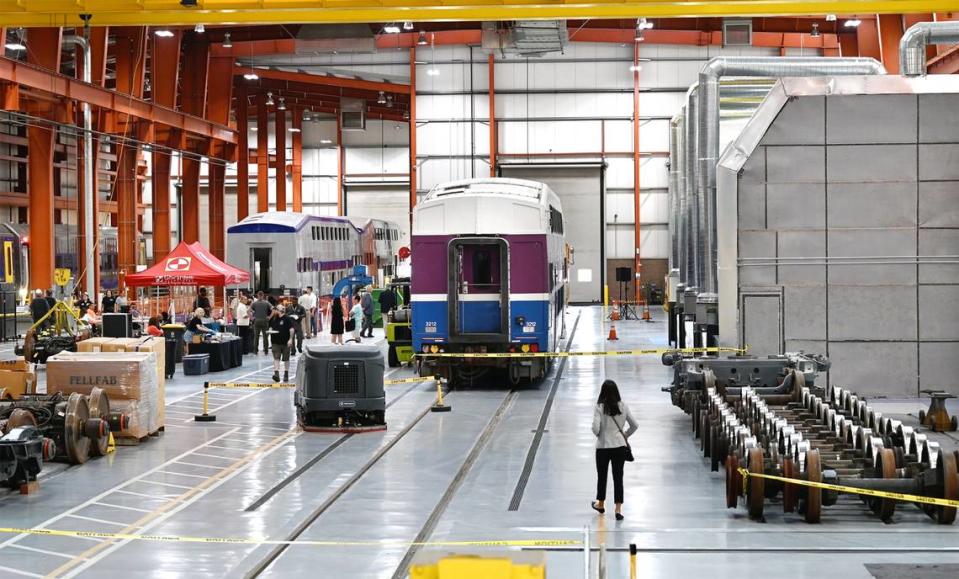Rail lines connecting the Valley to broader California are most welcome and needed | Opinion
Trains are an important feature of a vibrant, evolving civilization.
In moving people consistently and efficiently between Points A and B, passenger rail improves job prospects. It helps students get to college, and children see their grandparents. It reduces the use of cars, easing traffic and air pollution, especially as trains move from dirty diesel to renewable diesel, and eventually, to all-electric locomotion.
While high-speed rail attracts many transit headlines these days, an effort on a parallel track, if you will, will mean much more, much sooner, to Central Valley people.
By late 2026, Altamont Corridor Express (ACE) passenger rail linking Stockton to the Bay Area will extend north to Sacramento and south to Modesto. Four years later, the Modesto line should reach Merced, where riders eventually could transfer to high-speed rail heading to Fresno and Southern California.
This effort is called the Valley Rail Program. It’s visionary, it’s bold and it’s about time that the Valley assumes its rightful place in a forward-looking, connected state.

These ACE extensions will lift points along the way as well, with stations in Elk Grove, Midtown Sacramento and Natomas near Sacramento International Airport on the northern branch by 2026, Lodi in 2027, and Sacramento City College and Old Sacramento in 2029. Others in Plumas Lake, Marysville, Gridley and Chico will follow.
The southern ACE branch will add stations in downtown Manteca and Ceres as well as Modesto by late 2026, with others in Ripon and north Lathrop a year later. Turlock’s will come in 2029, and those in Livingston and Merced, in 2030.
A sister-effort will beef up Amtrak’s San Joaquin service with more roundtrips from Bakersfield to the capital and over the Altamont Pass. If oft-maligned high-speed rail stays on track, people heading south eventually could transfer in Merced for stops in Madera, Fresno, Hanford and Bakersfield as well as Los Angeles.
This is a big deal. The Valley Rail Program will change travel modes, shopping destinations and lives across much of California.

Still, these dates are later than initially promised, by two to four years. The Modesto Bee Editorial Board asked the Valley Rail Program to explain the delays, which officials from the San Joaquin Regional Rail Commission — the owners and operators of ACE — attributed to complexities of managing billions of dollars and the needs of multiple stakeholders. Coordinating with freight service was also cited as a reason for the delays.
Concentrating on just the line to Modesto could speed that up sooner than 2026, sure. But that would delay the line to Sacramento by several years. Doing both at the same time means modest delays for both, instead of a significant holdup for either.
“We can’t cherry-pick one little piece at a time,” said Stacey Mortensen, the rail commission’s executive director. “It has to be simultaneous.”
Affordable housing, too
Emerging partnerships between rail and housing projects add the intriguing element of transit-oriented development. The idea is to reduce vehicle traffic even further if people can walk from their homes to catch a ride to work or play in another city. State and federal agencies for years have tried to encourage such convenience — which reduces climate-changing emissions — by dangling grants.
The rail commission has pounced on this incentive, recently obtaining tens of millions of dollars for two affordable housing projects near depots in Stockton (Grand View Village and Hunter House) and one each in Sacramento (On Broadway) and Modesto (Archway Commons). And they’re trying for three more grant awards in an upcoming round, one each in Sacramento, Modesto and Fremont.
With promising advances in mobility and much-needed affordable housing on the horizon, extended ACE construction timelines feel more like we’re waiting for a train running late rather than having missed it altogether. The rail commission deserves broad support.


